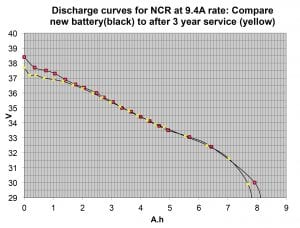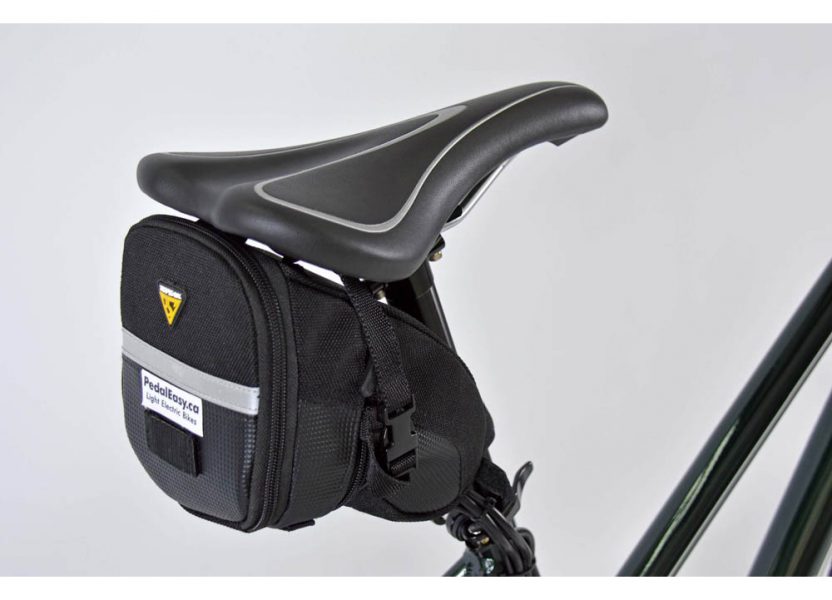Battery Data after 3 years service
This is an update on an earlier post “Our Batteries”, please refer to that article for background on NCR chemistry.
Estimates of the service lives of lithium ion batteries, particularly of new chemistries like the Panasonic NCR batteries we use, are of necessity based on what is termed “accelerated aging” tests (because this new variant of lithium-ion chemistry has not been around long enough to generate “real-time” data from in-service experience). For the past 3 1/2 years I have intentionally done all my e-cycling with the same NCR battery, expressly for the purpose of getting real-world data on its performance (i.e., “aging”). During the 3 years, this battery was charged at least 300 times, as it powered the bike through temperatures ranging from -20C (in Ontario) to +40C (in the deserts of the US south west). Altogether it accumulated 4000+ km of riding.
The energy capacity of this battery compared with that of when it was new is shown in the graph below. The area under the curves (V x A.h = Watt-hours) equates to energy delivered by the battery as it is discharged…in this case into a bank of electrical resistors. The result is a “fall-off” in storage capacity…that is, cycling “range”…of less than 3% after 3 years of severe service. The projected lifetime of this battery chemistry has greatly exceeded all our expectations!



